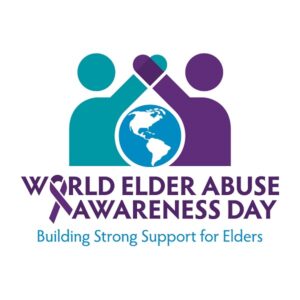Respect & Protect Our Elders

Respect & Protect Our Elders
Did you know that one in ten seniors has been a victim of abuse? Only 4% of elder abuse is reported but the harm impacts the entire community. Health care and legal costs increase because of elder abuse, which impacts Medicare and Medicaid. Financial exploitation of seniors is estimated to be at least $2.9 billion. And, at a time when older adults should be enjoying the golden years and sharing wisdom, many withdraw from engagement because of mistreatment.
In order to respect and protect our elders, it’s important to recognize what elder abuse looks like and take steps to safeguard seniors.
What is elder abuse?
Elder abuse is an intentional act—or failure to act—which brings harm or the possibility of harm to someone 60 years or older. Typically, this mistreatment is done by someone the senior trusts, like a family member or caregiver. There are several different types of elder abuse, including:
- Physical abuse causes pain, injury, distress, or death through acts like hitting, kicking, pushing, slapping, and burning.
- Sexual abuse involves unwanted or forced sexual acts of any kind with or without penetration as well as sexual harassment.
- Financial abuse is illegal, unauthorized, or improper use of the elder’s tangible resources such as money, belongings, or other assets for someone besides the elder.
- Emotional/psychological abuse are verbal or nonverbal actions to inflict mental pain or distress like humiliation, threats, harassment, and isolation.
- Neglect is ignoring the basic needs such as food, water, shelter, hygiene, and medical care for an elderly person in care.
How can I recognize signs of elder abuse?
There are three different areas to pay attention to when determining the possibility of elder abuse: emotional, physical, and financial. Some emotional signs to be on the lookout for are fear or anxiety, depression, changes in sleep or behavior patterns, and isolation or being detached. Physical clues involve broken bones, bruises or welts, cuts or burns, underclothing that is torn or stained, overall dirtiness and poor living conditions, missing daily use items like glasses or medications, and unexplainable sexually transmitted diseases. Signs of financial abuse are unpaid bills, unusual bank account changes, forged financial documents, and quick changes to a will or other financial documents.
How can I protect elders from abuse?
Elder abuse prevention is best accomplished as a community effort. In addition to learning the signs, so make sure to share these 3 actions to take immediately.
- Volunteer! Become that friendly face at nursing homes or other residences. You can prevent isolation and keep an eye out for any concerns.
- Talk to family and friends. Make sure they know how we can help everyone age well. Discuss what a community that respects and protects seniors looks like, from improved social services to community centers and programs to reduce elder abuse.
- Help caregivers. Being a caregiver can be a hard and lonely task. Help by taking care of errands, taking them out to coffee, or taking on the care so they can take a break.
We can make aging in our community better by making it safer. But it takes all of us to get rid of elder abuse.
Source: IlluminAge AgeWise with information from University of Southern California, National Center on Elder Abuse, Administration for Community Living, and the Centers for Disease Control and Prevention.
![Guiding Care [logo]](https://www.guidingcarefl.com/wp-content/uploads/sites/361/2021/05/logo.png)